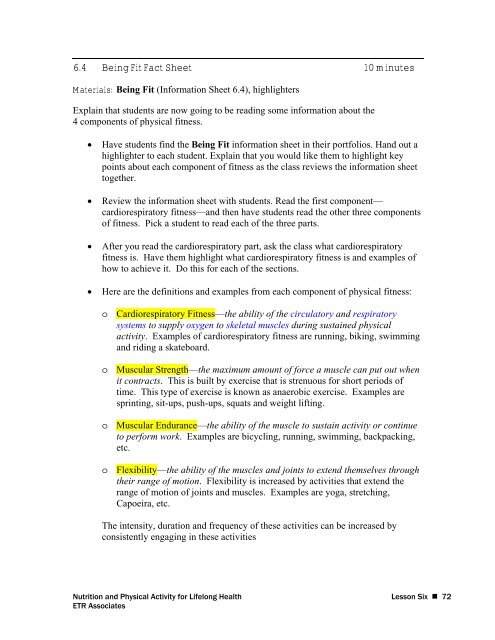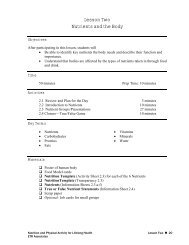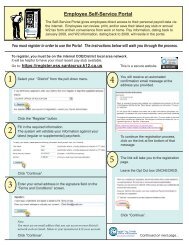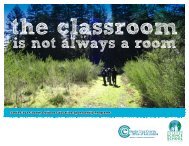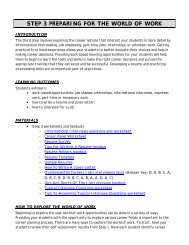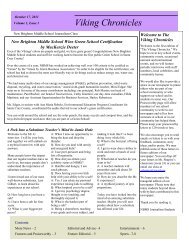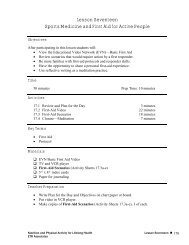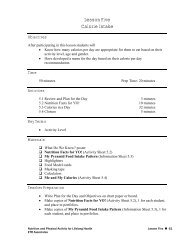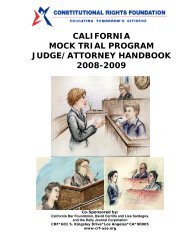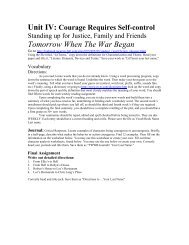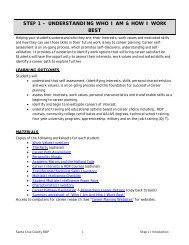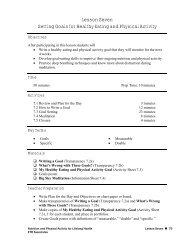Course Lessons - Physical Education for Body, Mind and Spirit
Course Lessons - Physical Education for Body, Mind and Spirit
Course Lessons - Physical Education for Body, Mind and Spirit
- No tags were found...
Create successful ePaper yourself
Turn your PDF publications into a flip-book with our unique Google optimized e-Paper software.
6.4 Being Fit Fact Sheet 10 minutesMaterials: Being Fit (In<strong>for</strong>mation Sheet 6.4), highlightersExplain that students are now going to be reading some in<strong>for</strong>mation about the4 components of physical fitness.• Have students find the Being Fit in<strong>for</strong>mation sheet in their portfolios. H<strong>and</strong> out ahighlighter to each student. Explain that you would like them to highlight keypoints about each component of fitness as the class reviews the in<strong>for</strong>mation sheettogether.• Review the in<strong>for</strong>mation sheet with students. Read the first component—cardiorespiratory fitness—<strong>and</strong> then have students read the other three componentsof fitness. Pick a student to read each of the three parts.• After you read the cardiorespiratory part, ask the class what cardiorespiratoryfitness is. Have them highlight what cardiorespiratory fitness is <strong>and</strong> examples ofhow to achieve it. Do this <strong>for</strong> each of the sections.• Here are the definitions <strong>and</strong> examples from each component of physical fitness:o Cardiorespiratory Fitness—the ability of the circulatory <strong>and</strong> respiratorysystems to supply oxygen to skeletal muscles during sustained physicalactivity. Examples of cardiorespiratory fitness are running, biking, swimming<strong>and</strong> riding a skateboard.o Muscular Strength—the maximum amount of <strong>for</strong>ce a muscle can put out whenit contracts. This is built by exercise that is strenuous <strong>for</strong> short periods oftime. This type of exercise is known as anaerobic exercise. Examples aresprinting, sit-ups, push-ups, squats <strong>and</strong> weight lifting.o Muscular Endurance—the ability of the muscle to sustain activity or continueto per<strong>for</strong>m work. Examples are bicycling, running, swimming, backpacking,etc.o Flexibility—the ability of the muscles <strong>and</strong> joints to extend themselves throughtheir range of motion. Flexibility is increased by activities that extend therange of motion of joints <strong>and</strong> muscles. Examples are yoga, stretching,Capoeira, etc.The intensity, duration <strong>and</strong> frequency of these activities can be increased byconsistently engaging in these activitiesNutrition <strong>and</strong> <strong>Physical</strong> Activity <strong>for</strong> Lifelong Health Lesson Six • 72ETR Associates


